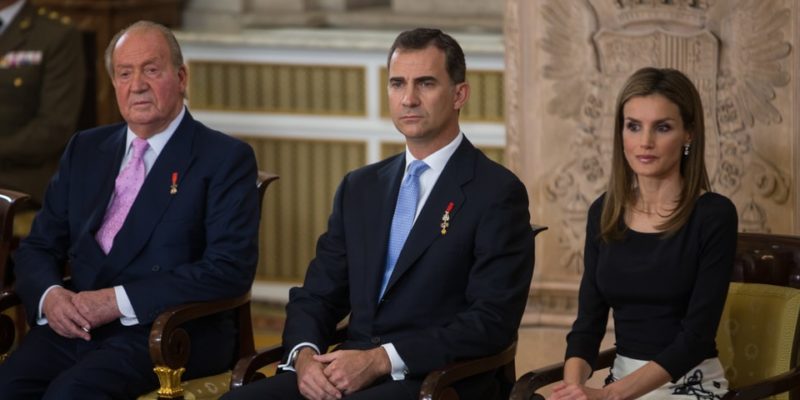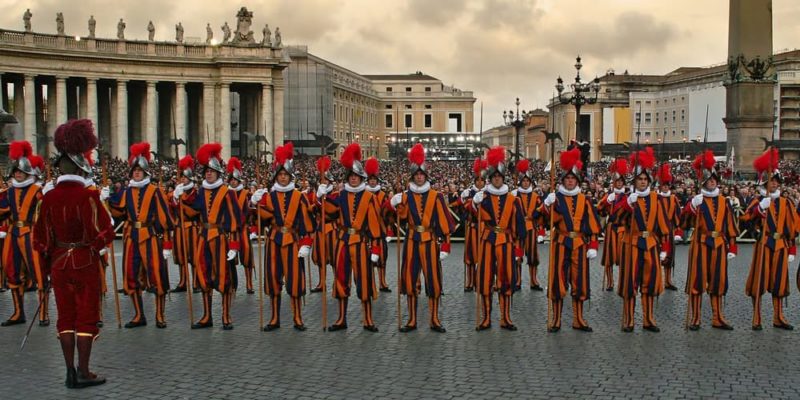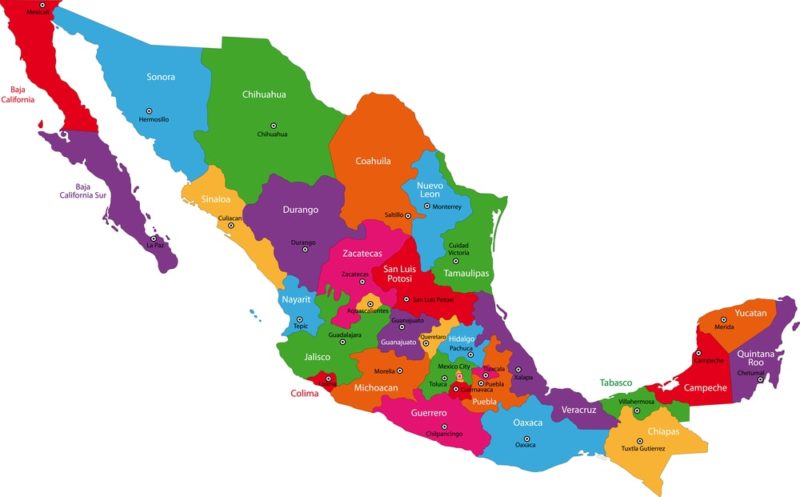We explain what the forms of government are, the classification criteria and the characteristics of each one.

What are the forms of government?
The forms of government are the organizational models of the political power that can adopt a State according to the relationships established between their institutions. It is a key concept in political science, which can also be called government systems, government regimes or political models. The main forms of government today are the republic, the monarchy, the dictatorship and theocracy.
The different forms of government have differences among themselves and tend to vary from one era to another and from one State to another. This may be due to structural, historical or idiosyncratic conditions of the respective societies, or to circumstantial or accidental conditions, such as wars, catastrophes, economic crises, among others.
The concept of forms of government should not be confused with forms of state which points to the political-territorial organization of a nation (such as a federal, confederal or unitary State). The form of government is often included in the official name of the country: Kingdom of Spain, Argentine Republic, Islamic Republic of Iran, among others.
There are many classifications and nomenclatures to define forms of government. some coming from Antiquity. Thus, it is possible to classify them according to different criteria:
- According to the mechanism chosen to access the head of state. This criterion is based on the procedures that determine who leads the nation politically. If the head of state is elected by the citizens, it is a republic; If he inherits power, it is a monarchy; If it usurps it without respecting any pre-existing institutional mechanism, it is a dictatorship.
- Depending on the degree of freedom and participation policy. This criterion focuses on the way in which power is exercised, particularly in relation to decision-making and whether or not the human rights and fundamental rights of the population are respected. Thus, there can be democracies (with freedom of political participation, freedom of expression and multi-party system), authoritarianisms (with an abusive exercise of political authority and persecution of the opposition) and totalitarianisms (with absolute control of political, social and ideological life of the nation by the ruling party).
- Depending on the type of link between the Head of State and Parliament. This criterion distinguishes between presidential regimes, in which the president is democratically elected and is the head of the State, and parliamentary regimes, in which Parliament elects the president or prime minister to exercise executive power with powers very limited by the legislative power.
However, all these criteria are not mutually exclusive, but can be combined and give rise to various forms of political organization.
Key points
- Forms of government are models of organization of the political power of a State, defined by the relationships between its institutions.
- They are classified according to various criteria: access to the head of state, degree of freedom and political participation, or link between the head of state and Parliament.
- In ancient times, Aristotle distinguished between three pure forms of government (monarchy, aristocracy, democracy) and three corrupt forms (tyranny, oligarchy, demagogy).
- The main forms of government in force today are the republic, the monarchy, the dictatorship and theocracy.
Classic classification of forms of government
In ancient times, some philosophers and historians reflected on forms of government and offered different classifications and evaluations. One of the most important was that of the Greek philosopher Aristotle (384-322 BC), who distinguished three pure and three corrupt forms of government: monarchy (whose corrupt form was tyranny), aristocracy (whose corrupt form was oligarchy) and democracy (whose corrupt form was demagogy).
Later, the Greek historian Polybius (c. 200-118 BC), who lived in Rome, developed the ideas of Aristotle and proposed that the only way to prevent a pure form from degenerating into a corrupt form was through a mixed government that mixed aspects of each of them. In this way, a balance would be achieved between the different social sectors that made up the country, just as he considered what happened in the Roman Republic, where the consuls represented the monarchical aspect, the Senate the aristocratic aspect and the assemblies of the plebs the democratic aspect. .
Currently, These concepts continue to be used in political science to refer to various forms of government. although with differences in their definitions according to the point of view of each author. Even the idea of mixed government has been used by some scholars to characterize some regimes such as parliamentary and constitutional monarchies. The most common forms of government today are the republic, monarchy, dictatorship and theocracy.
See also: Greek culture
Republics

Republics are a form of political organization that was born in ancient Rome in 509 BC. C. and which also adopted aspects of Athenian democracy, which emerged in Greece in the 6th century BC. C. Its name comes from res publicathe “public thing” in Latin, which is the name given to matters that were related to the State because they concerned the common good.
Republics are characterized by administer power through institutions that keep different areas of the State separate according to the theory of the three powers developed by the French philosopher Montesquieu (1689-1755):
- Executive power. It is the head of the State and is responsible for directing domestic and foreign policy and executing laws.
- legislative branch. It is responsible for creating laws and controlling the actions of the executive branch.
- judiciary. It is in charge of the interpretation of laws and the administration of justice.
Each of these powers is occupied by different people to achieve a counterweight or balance between them.
In the republics is usually implemented democracy as a method of access to power that is, the public election of candidates for the executive and legislative branches. The judicial power, for its part, is carried out by personnel selected for their professional merits through legislative appointment.
However, there are also regimes that are described as republican but do not implement democratic mechanisms or promote the balance of powers, as occurs in single-party (mainly communist) republics, such as the Republic of Cuba and the Socialist Republic of Vietnam.
Some examples of republics currently are: the Argentine Republic, the French Republic, the United States of America, the United Mexican States, the Federal Republic of Germany, the Italian Republic, the Republic of India, the State of Israel and the Federative Republic from Brazil.
Monarchies

The monarchies They are government regimes in which the head of the State is exercised by a king whose access to power is generally hereditary, that is, it is transmitted from one generation to another within the same family. This form of government was very common at different times in history, especially in the Middle Ages and the Modern Age, when the nobility was the dominant class in Europe.
The monarchical system began to enter into crisis at the end of the 18th century and during the 19th century, as a result of the political rise of the bourgeoisie and the formation of republican regimes in places such as the United States, France and Latin America. However, many monarchies still remain, although generally integrated into a democratic political framework, in the form of constitutional or parliamentary monarchies.
In these monarchies, the king exercises functions of representation of the State, while Parliament is in charge of the legislative branch, the government (headed by a president or a prime minister) is in charge of the executive branch, and the judicial branch functions autonomously. .
Therefore, although traditionally the king of a monarchy concentrated political power, In current parliamentary monarchies the king is usually considered only a diplomatic and tutelary figure of the State and has no effective power.
Some examples of monarchies today are: the Kingdom of Spain, the United Kingdom of Great Britain and Northern Ireland, the Kingdom of Belgium, the Kingdom of Sweden, the Kingdom of the Netherlands, the Kingdom of Jordan and the Kingdom of Cambodia.
Dictatorships
The dictatorships They are non-democratic political systems, generally headed by a political or military leader, or by a small group of people, who are characterized by the authoritarian exercise of power and are usually established through an act of force, such as a coup d'état. Dictatorships are organized above constitutional laws, and often suspend or control democratic institutions (such as Parliament).
The term “dictatorship” comes from the Roman dictatorship, an institutional system of the Roman Republic that consisted of the appointment of a dictator by the consuls, at the request of the Senate, to deal with an emergency situation, such as a internal crisis or war. This appointment gave exceptional powers to the dictator but only for a certain period of time.
In its modern use, the term dictatorship refers to regimes established by force, generally through coups d'état, in which power is concentrated in the person of a leader or in a restricted institution (such as a military junta or the leadership). of a political party) and is governed de facto (that is, through a violation of the laws and the Constitution). In many cases, dictatorships do not recognize themselves as such, or even maintain some democratic institutions that allow them to be granted legitimacy.
Some current examples of military dictatorship are: the Republic of Sudan, Burkina Faso and the Republic of Mali. Some analysts also consider dictatorships to be single-party regimes or authoritarian control of the State by a political leader, such as the State of Eritrea, the Republic of Cuba, the Democratic People's Republic of Korea (North Korea), the Bolivarian Republic of Venezuela, the Republic of Belarus and the Syrian Arab Republic.
Theocracies

Theocracies are governments headed by religious authorities in which the State is organized according to some doctrine or law considered sacred. Therefore, these are regimes in which there is no separation between State and religion.
This political model was common in some ancient civilizations, but is currently practically nonexistent in the West. However, there is a theocratic State in Europe: Vatican City, whose head of State is the Pope. Also Theocracies exist in some Middle Eastern countries. In general, theocracies adopt aspects of other forms of government, such as monarchy or republic, but subordinate them to religious law.
Some examples of theocracies today are: Vatican City, the Islamic Republic of Iran, the Kingdom of Saudi Arabia, and the Islamic Emirate of Afghanistan.
Forms of State

The forms of State are the different types of political-territorial organization that a state society can adopt. The main ones are the unitary State, the federal State (or federation) and the confederal State (or confederation).
Unitary states
Unitary states are forms of political organization that have a centralized government that handles all or most political decisions of the nation. The central State creates administrative subdivisions that allow it to implement its policies in the different regions that make up the country. In some decentralized models, these regions may have a certain degree of independence, but local governments are always subordinate to the central government.
Some examples of unitary states are: France, the United Kingdom, Spain, Portugal, Chile and Paraguay.
federal states
The federal State, also called federation, is a political organization that brings together several federated political entities (called states or provinces), which have their own governments jurisdictions and constitutions but that recognize the authority of a common or federal government. It is the union of several States to build a single State of greater size and power, generally in the form of a federal or federative republic.
In these cases, the federal State administers the country with its own public powers and laws, which includes foreign relations. It coexists with the local, provincial or state order, which has its respective public powers but with a restricted area of action, since it cannot contravene the federal constitutional order. On the other hand, the federal government cannot intervene in the self-government of the federated states either.
Some examples of a federation are: the United States of America, the United Mexican States, the Argentine Republic, the Russian Federation, the Federal Republic of Germany, the Bolivarian Republic of Venezuela and the Federative Republic of Brazil.
confederal states
Confederal States or confederations are distinguished from federations in that, unlike the latter, Its states retain autonomy and sovereignty, even when they are united with each other.. Therefore, the central body has no authority of its own and is rather a diplomatic corps made up of representatives of the confederate states.
Furthermore, confederations are usually created by a treaty that politically brings together their members, while a federation is guided by a federal Constitution. Historically, there were some confederal states, but currently the term has little use, although some apply it to supranational alliances or communities (such as the European Union). On the other hand, Switzerland's official name is the Swiss Confederation, although many political analysts describe it as a federation.
Some historical examples of confederation were: the Old Swiss Confederation (1291-1798), the United Provinces of the Netherlands (1588-1795), the Argentine Confederation (1831-1861), the Confederation of Central America (1842-1845), the Confederate States of America (1861-1865) and the North German Confederation (1867-1871).
document.addEventListener(“DOMContentLoaded”, (e) => { var sliderContainer, slider; sliderContainer = document.getElementById(‘block_aaf7d4bb4f2c61d8c355800d1d13a273’); if (typeof initSlider !== ‘function’) { console.log(‘Swiper haven\’t been loaded’); sliderContainer.className += ‘ fw scroll-snap’; return; }; options = { direction: ‘horizontal’, speed: 1000, slidesPerView: ‘auto’, // slidesPerGroup: 1, centerInsufficientSlides: true, // centeredSlides:true, spaceBetween: 15, breakpoints: { 720: { // centeredSlides: false, // slidesPerGroup: 2, spaceBetween: 25 }, }, pagination: { el: ‘.swiper-pagination’, type: ‘bullets’, clickable: true }, } slider = initSlider(sliderContainer, options); })
References
- Bobbio, N., Matteucci, N. and Pasquino, G. (Dirs.). (2015). Politics Dictionary. 21st century.
- Heslop, D. A. (2023). Political system. Encyclopedia Britannica. https://www.britannica.com/
- Sartori, G. (1992). Elements of political theory. Alliance.





